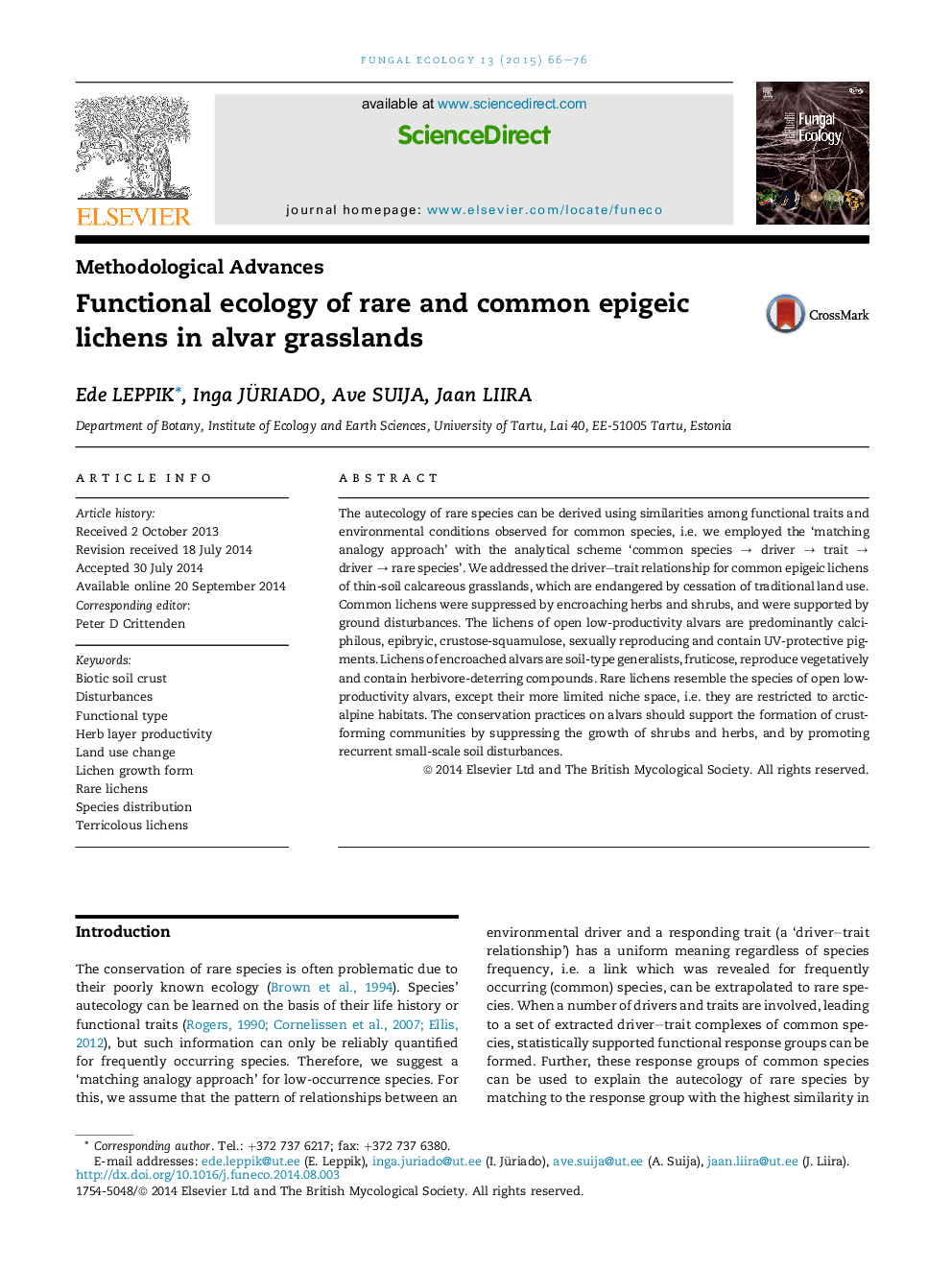| Article ID | Journal | Published Year | Pages | File Type |
|---|---|---|---|---|
| 2053539 | Fungal Ecology | 2015 | 11 Pages |
The autecology of rare species can be derived using similarities among functional traits and environmental conditions observed for common species, i.e. we employed the ‘matching analogy approach’ with the analytical scheme ‘common species → driver → trait → driver → rare species’. We addressed the driver–trait relationship for common epigeic lichens of thin-soil calcareous grasslands, which are endangered by cessation of traditional land use. Common lichens were suppressed by encroaching herbs and shrubs, and were supported by ground disturbances. The lichens of open low-productivity alvars are predominantly calciphilous, epibryic, crustose-squamulose, sexually reproducing and contain UV-protective pigments. Lichens of encroached alvars are soil-type generalists, fruticose, reproduce vegetatively and contain herbivore-deterring compounds. Rare lichens resemble the species of open low-productivity alvars, except their more limited niche space, i.e. they are restricted to arctic-alpine habitats. The conservation practices on alvars should support the formation of crust-forming communities by suppressing the growth of shrubs and herbs, and by promoting recurrent small-scale soil disturbances.
